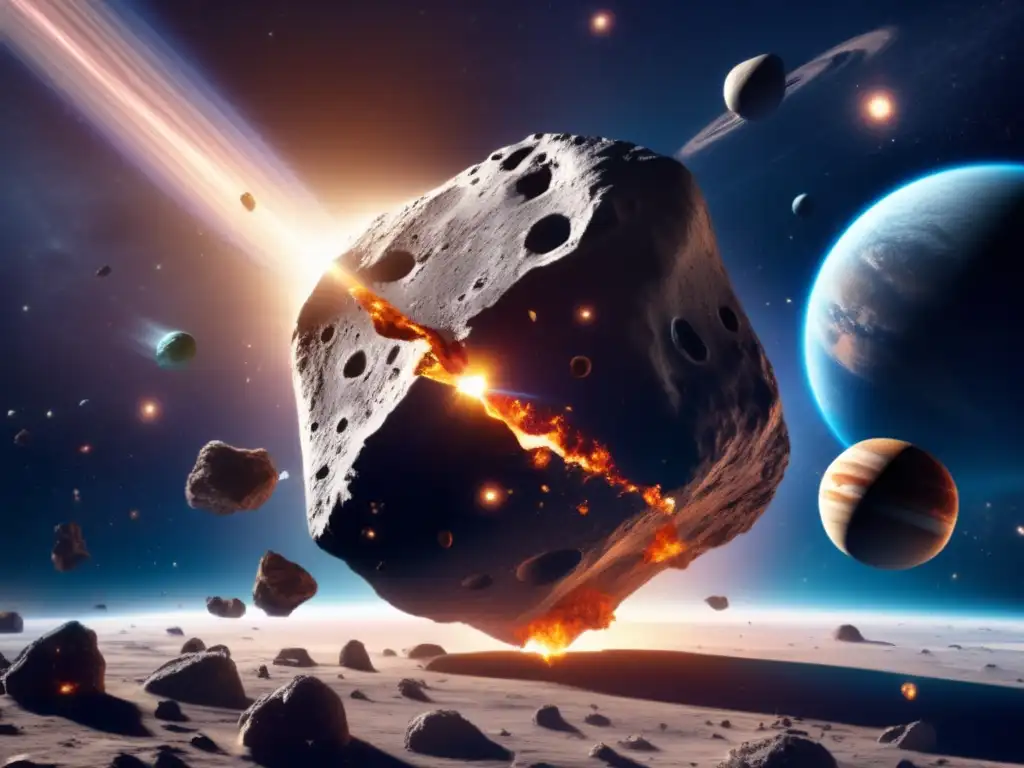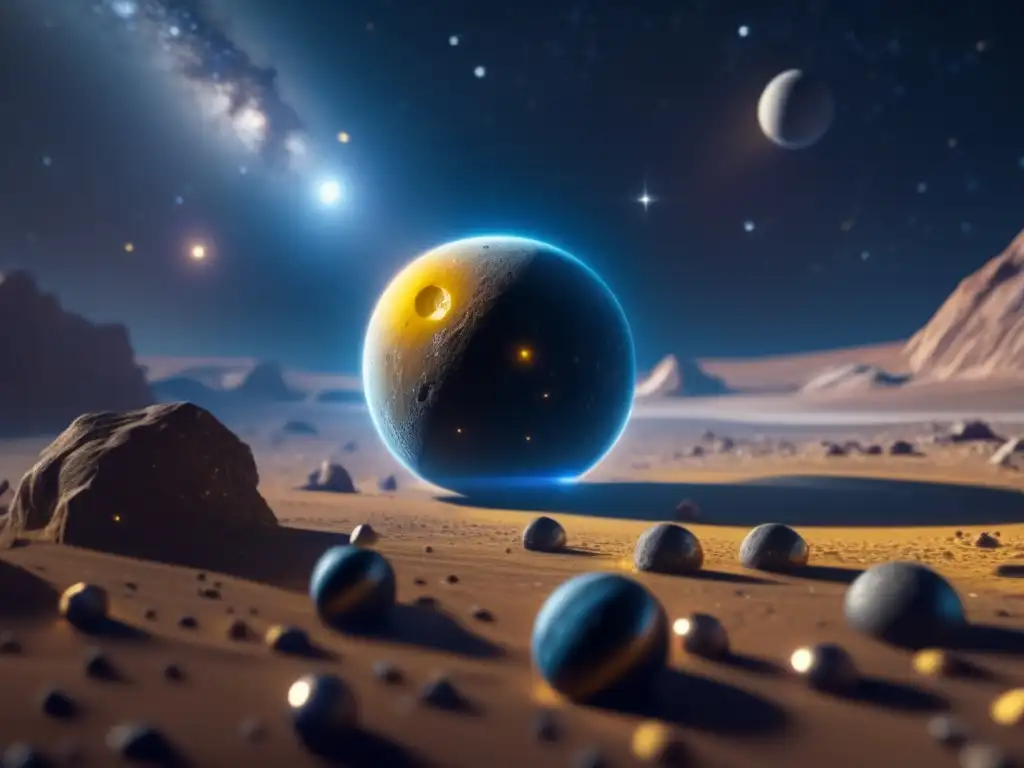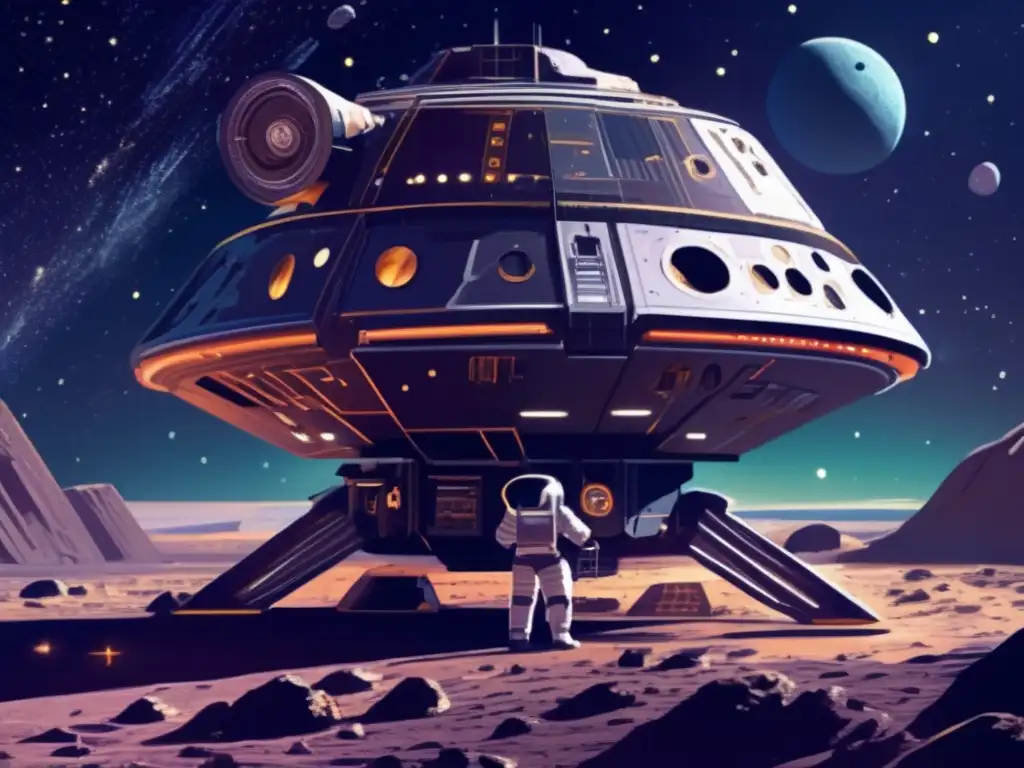The Cosmic Cocktail Of Life: Asteroids And Panspermia

Introduction
Asteroids have always been objects of fascination for us. Many believe that they played a crucial role in the formation of our solar system, while some consider them as a threat to our existence. But, did you know that asteroids could also be linked to the origin of life on our planet? In this article, we will explore the fascinating theory of panspermia, which suggests that life on earth may have originated from outer space through asteroids.
What is Panspermia?

The Concept of Panspermia
Panspermia is a hypothesis that suggests life can be transported between planets through various means, including asteroids and comets. The idea is that life didn't originate on Earth, but rather was seeded here from other parts of the universe. This concept has been around for centuries, but it was only in the 20th century that the theory became more scientifically grounded.
Types of Panspermia
There are two types of panspermia: lithopanspermia and radiopanspermia. Lithopanspermia refers to the transport of living microorganisms inside rocks or dust, while radiopanspermia deals with the transport of microorganisms through radiation pressure from stars or supernovae. Both types of panspermia suggest that life can travel across the vast distances of space and colonize other planets and moons.
Evidence for Panspermia
There is no direct evidence that supports the theory of panspermia, but several discoveries made in recent years point towards it. For instance, experiments have shown that simple organisms can survive the harsh conditions of outer space, such as extreme temperatures and radiation. Moreover, microorganisms have been found in space-like environments, including meteorites and the International Space Station.
The Role of Asteroids in Panspermia

Asteroids as Transporters of Life
Asteroids are considered to be prime candidates for transporting life across the universe. These rocky bodies are known to contain organic molecules, which are the building blocks of life. Moreover, asteroids are capable of surviving long journeys through space without being destroyed or altered by the harsh conditions of space.
Asteroids and the Origin of Life on Earth
The theory of panspermia suggests that life could have originated on other planets and moons, rather than on Earth. One possible source of this life is asteroids. It is believed that asteroids may have brought with them the organic compounds necessary for the evolution of life, such as amino acids, nucleotides, and sugars. These compounds could then have reacted with each other to form the first living organisms on our planet.
Recent Discoveries and Future Research
Recent discoveries have shown that asteroids contain more complex organic compounds than previously thought, including hydrocarbons, aromatic compounds, and amino acids. This reinforces the idea that asteroids played a crucial role in the origin of life on Earth. In the future, researchers plan to study asteroids more closely to determine how they could have contributed to the evolution of life on our planet.
Panspermia and the Search for Extraterrestrial Life

Panspermia and the Possibility of Life on Other Planets
If life can travel across the universe through panspermia, then it is possible that life exists on other planets and moons in our solar system and beyond. Scientists are exploring the potential for life on planets such as Mars and Saturn's moon Enceladus, where the conditions for life may exist. Moreover, the discovery of exoplanets that are similar to Earth in size and composition has also raised the possibility of finding extraterrestrial life.
Challenges in Detecting Extraterrestrial Life
Detecting signs of extraterrestrial life is a complex task, as we do not know what form it might take. Life may exist in forms that are completely different from what we are familiar with, making it difficult to identify. Moreover, the vast distances involved in space travel make it challenging to explore other planets and moons in detail.
Future Research and Exploration
In recent years, space agencies such as NASA and ESA have launched missions to explore other planets and moons in our solar system. These missions will help us understand the potential for life on other worlds and may lead to the discovery of new forms of life. Moreover, the development of new technologies, such as telescopes and rovers, will enable us to explore deeper into space and search for signs of extraterrestrial life.
Frequently Asked Questions

-
Could asteroid impacts have contributed to the evolution of life on Earth?
Yes, asteroid impacts could have played a role in the evolution of life on Earth. Some scientists believe that asteroids may have brought the necessary organic compounds to our planet, which then reacted with each other to form the first living organisms.
-
Could life exist on other planets and moons in our solar system?
It is possible that life exists on other planets and moons in our solar system. Scientists are exploring the potential for life on Mars, Europa, Enceladus, and other worlds where the conditions for life may exist.
-
What are some of the challenges in detecting extraterrestrial life?
Detecting signs of extraterrestrial life is a complex task, as we do not know what form it might take. Life may exist in forms that are completely different from what we are familiar with, making it difficult to identify. Moreover, the vast distances involved in space travel make it challenging to explore other planets and moons in detail.
-
Could future missions to other planets and moons help us find extraterrestrial life?
Yes, future missions to other planets and moons will help us understand the potential for life on other worlds and may lead to the discovery of new forms of life. Moreover, the development of new technologies, such as telescopes and rovers, will enable us to explore deeper into space and search for signs of extraterrestrial life.
-
Is panspermia a proven theory?
No, panspermia is a hypothesis that has yet to be proven. However, recent discoveries have strengthened the possibility that life could be transported through space via asteroids and comets.
Conclusion
The theory of panspermia is a fascinating concept that suggests life may have originated from outer space. Asteroids are considered prime candidates for transporting life across the universe, and recent discoveries have shown that they contain the organic compounds necessary for the evolution of life. While panspermia is not a proven theory, it has opened up new avenues for research and exploration into the origin of life and the possibility of finding extraterrestrial life.
Thank you for reading this article on www.asteroidrealm.com. We encourage you to share your thoughts in the comments section and engage with our website by subscribing and sharing our articles on social media. For further reading, check out our additional resources below.
Additional Resources

- Asteroids Make Great Space Missions but Also Make Great Laboratories
- Panspermia: How Life Could Travel Across the Universe
- The Organic Composition of Ceres Surface Material
 Interplanetary Hitchhikers: Microbes On Asteroids
Interplanetary Hitchhikers: Microbes On Asteroids The Asteroid Nursery: A Cradle For Life?
The Asteroid Nursery: A Cradle For Life? Asteroids: Potential Wellsprings Of Life In The Cosmos
Asteroids: Potential Wellsprings Of Life In The CosmosIf you want to discover more articles similar to The Cosmic Cocktail Of Life: Asteroids And Panspermia, you can visit the Asteroids and Extraterrestrial Life category.
Leave a Reply

Articulos relacionados: